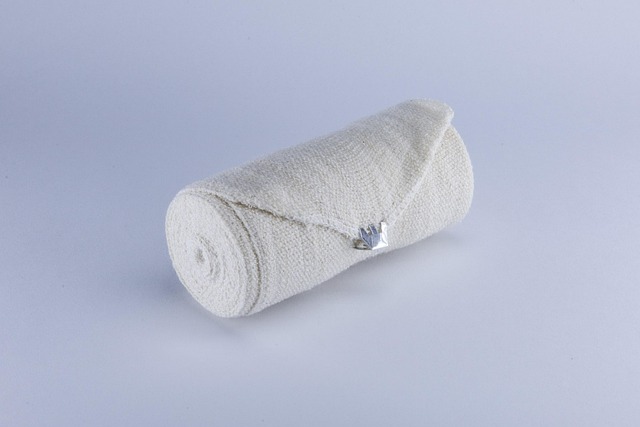Botox for anti-aging temporarily paralyses muscles to reduce fine lines and wrinkles, especially around eyes, forehead, and mouth. It blocks nerve signals causing muscle contractions, smoothing skin and minimizing dynamic wrinkles. Non-surgical, safe, and effective, Botox offers alternative to surgery with quick recovery. However, potential risks like temporary weakness or paralysis require careful consideration and doctor consultation.
“Unraveling the science behind Botox and muscle relaxation offers a powerful tool in the quest for youthful skin. This article delves into the neurological underpinnings of understanding Botox, exploring its mechanism of action on muscle contraction for effective anti-aging treatments. We examine the role of muscles in skin aging and how targeted muscle relaxation can reduce dynamic wrinkles. By shedding light on the safety considerations, this guide equips readers with knowledge, ensuring informed decisions regarding Botox as an anti-aging strategy.”
Understanding Botox: A Neurological Approach
Botox, a neurotoxin derived from the bacteria Clostridium botulinum, has become synonymous with anti-aging treatments. Its mechanism revolves around its ability to temporarily paralyze or weaken muscles, which is particularly effective for reducing the appearance of fine lines and wrinkles. When administered by a trained professional, Botox injections can provide significant cosmetic benefits, especially in targeted areas like the forehead, eyes, and mouth.
This neurological approach works by blocking specific nerve signals that stimulate muscle contraction. By inhibiting these signals, Botox prevents the muscles from contracting as strongly, thereby smoothing out skin and minimizing dynamic wrinkles caused by facial expressions. This non-surgical procedure offers a safe and effective alternative for those seeking to reverse signs of aging without extensive surgery or lengthy recovery periods.
The Role of Muscles in Aging Skin
Muscles play a significant role in the appearance and health of our skin, particularly as we age. As facial muscles contract over time, they can lead to lines and wrinkles, contributing to the aging process visible on our faces. The continuous movement and expression of muscles cause these fine lines to form and deepen, resulting in a more aged appearance. This is where Botox for anti-aging becomes a popular solution.
Botox, a protein derived from bacteria, works by temporarily paralyzing specific muscle groups, reducing the frequency and intensity of muscle contractions. By relaxing these muscles, it prevents dynamic wrinkle formation, providing a smoother and more youthful complexion. This non-invasive procedure has gained popularity as an effective way to combat signs of aging, offering a natural-looking result that enhances overall facial aesthetics.
Botulinum Toxin: Mechanism and Effects
Botulinum Toxin, commonly known as Botox, is a powerful neurotoxin produced by the bacterium Clostridium botulinum. When used therapeutically in cosmetic and medical procedures, it primarily targets muscles responsible for causing wrinkles and involuntary movements. Its mechanism of action involves blocking the release of acetylcholine, a neurotransmitter that stimulates muscle contraction.
At the cellular level, Botox binds to specific receptors on the nerve endings, preventing the signal from reaching the muscle fibers. This leads to reduced muscular activity and, consequently, lessening or eliminating dynamic wrinkles, particularly around the eyes, forehead, and mouth. Beyond anti-aging benefits, Botox has been proven effective in various medical applications, such as treating overactive bladder, chronic migraines, and certain eye disorders, showcasing its versatility in muscle relaxation.
Safety and Considerations for Muscle Relaxation
Botox for anti-aging has become a popular choice for muscle relaxation, but it’s crucial to approach this procedure with caution and an understanding of safety considerations. While Botox is generally safe when administered by qualified healthcare professionals, there are potential risks and side effects that should be taken into account. These include temporary muscle weakness or paralysis at the injection site, which can affect facial expressions, as well as headaches, nausea, and, in rare cases, more serious allergic reactions.
It’s essential for individuals considering Botox for muscle relaxation to have realistic expectations and discuss any medical conditions, medications, or allergies with their doctor beforehand. Regular follow-ups with a healthcare provider are also vital to monitor the treatment’s effectiveness and address any concerns promptly, ensuring a safer and more successful experience.
Botox has emerged as a powerful tool in the battle against aging skin, offering a safe and effective solution for muscle relaxation. By understanding the science behind its neurological approach, the role of muscles in skin aging, and the precise mechanism of Botulinum Toxin, we can appreciate why Botox for anti-aging is a popular choice. With proper safety considerations, this treatment promises a youthful glow, enhancing one’s natural beauty without drastic measures.
